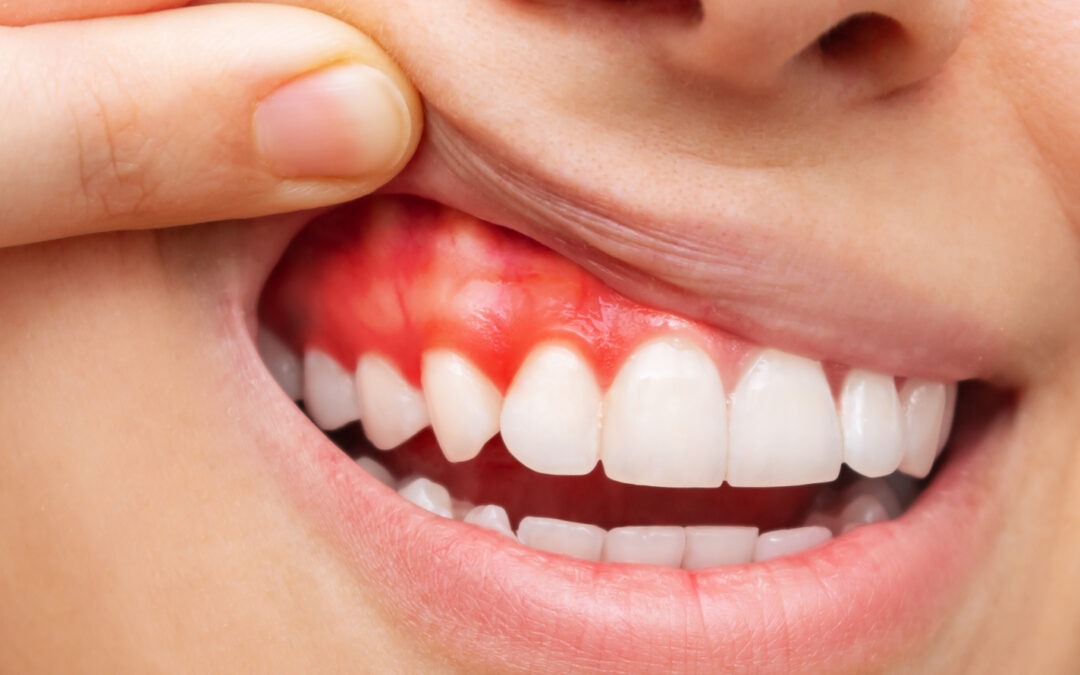We’re excited to start communicating with you, our community. This being our FIRST blog post, we wanted to write about something that we see everyday: Gum Disease. If you have gum disease, you’re not alone. About 80 percent (!!) of adults currently have some form of the disease and, if not treated, the bones, gums and connective tissue that support the teeth are destroyed.
What is Gum Disease
More commonly known as gum disease, periodontal disease can cause serious damage if not treated immediately. “Periodontal” simply means “around the tooth”; thus, periodontal disease affects the area around the tooth, including the gums, tissues and roots. A bacterial infection in this area is what causes gum disease to occur and can lead to weakening of the bone and possibly tooth loss.
Gum disease is best treated in its earliest stage, known as gingivitis. During this stage, your gums will become red, inflamed or swollen. Many times, this inflammation can be attributed to the bacteria found in plaque, the sticky film that can form on the teeth. However, gum inflammation can be caused by many other factors, including medical conditions, poor nutrition, smoking and even stress. Even with red, swollen gums, you may feel little discomfort, which causes many people to ignore the warning signs of periodontal disease. With treatment from your dentist or periodontist and proper oral hygiene, the effects of gingivitis on your teeth and gums can be reversed.
More about Periodontitis
The more advanced stage of gum disease is called periodontitis. Periodontitis comes in two main forms: aggressive and chronic. With aggressive periodontitis, otherwise healthy patients experience accelerated bone deterioration. On the other hand, chronic periodontitis is the more common form that progresses at a slower pace but still requires immediate treatment.
Periodontal disease can be treated several ways, depending on how advanced it is. Non‐surgical treatments may include prescription mouth rinses or scaling and planing. For those with periodontitis, surgical treatments may be recommended, such as soft tissue grafts, pocket reduction or bone regeneration.
Of course, the best treatment for periodontal disease is prevention. Brushing and flossing daily, along with regular visits to your dentist for dental cleanings and examination, can ward off gum disease and keep your smile healthy now and in the future.
Can periodontal gum disease be reversed? The answer is YES, if you begin early enough and are diligent. Advanced periodontal gum disease may also still be reversed, but it will take some special cleaning provided by your Dentist to give you a fighting chance.
Adopting a strenuous daily oral hygiene routine now can go a long way to reversing periodontal gum disease.
1. Brush thoroughly when you get up in the morning and before you go to bed each night. Brushing or at least rinsing with water after meals and snacks will also help remove food and bacteria trapped between teeth, helping in reversing periodontitis.
2. Rinse your mouth with a good antibacterial mouthwash for at least a full thirty seconds twice each day. This will help reach bacteria trapped in pockets below your gum line, aiding in reversing periodontal gum disease.
3. Floss every single day. Pay special attention to flossing just below the gum line for reversing periodontal gum disease.
4. Even better than flossing or rinsing is the use of one of the powerful oral irrigators on the market, which blast food particles out from between your teeth and clean the gumline. High‐end irrigators can be purchased with special tips to reach deeply into any pre‐existing pockets and clean them out. These special tips are necessary for effective cleaning if your periodontitis has already established itself.
While a conscientious oral hygiene routine can go a long way in aiding the reversal of periodontal gum disease, sometimes the infection is too far advanced, and it is necessary to get professional help.
How To Treat Gum Disease
If the problem is becoming severe, your Dentist may see fit to perform a periodontal cleaning. X‐rays can show deep pockets of bacteria surrounding any of your teeth below the gum line. Then your Dentist can choose from special procedures known as debridement, scaling or root planning. It means scraping the bacteria out and making the tooth less hospitable to germs. He may also order a prescription antibacterial mouth wash to be used daily which will also help in reversing periodontal gum disease.
In more severe cases, the Dentist may perform or refer you for periodontal surgery. It involves lifting the flaps of the gum to enable deep cleaning and suturing them back in place. After the procedure, you will have several appointments to check on the success of the cleaning. Still, there’s good news for patients that may have to suffer through surgery ‐‐ a study found that roughly 50% of patients with moderate to severe periodontal disease showed measurable improvement from surgery. While those trying non‐surgical options enjoyed less success.
The important thing is to seek help as soon as you notice any signs of trouble with your gums. The good news is, periodontal gum disease can be reversed if it’s caught early enough.
Schedule a visit at Vaksman Dental Group today for the best gum disease treatment in South San Francisco!

